
Microsoft Office 365 has been the de-facto productivity suite for enterprises of all shapes and sizes and a clear victor in the billion-dollar market for business productivity tools. With over 180 million monthly active users, 0ffice 365 eclipses any other cloud service provider by a huge margin and is poised to capture even larger market share
in years to come.
All set to sign an enterprise agreement for Microsoft Office 365? Great! But there is one small catch. No matter how amazing the product, performance of these mission-critical, cloud-based applications is largely dependent on the underlying network — and the network, in most cases, is anything but business-grade.
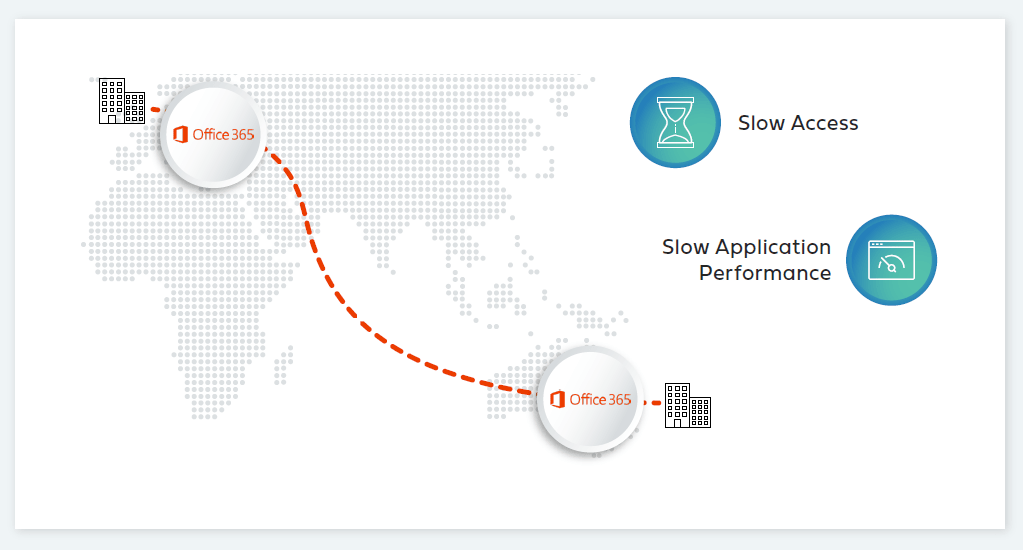
A 2019 survey by TechValidate noted that more than half of respondents experienced Office 365 network performance issues daily, if not multiple times per day. The same survey reported that 40 percent of respondents cited network congestion as the prime user experience killer and 63 percent of respondents agreed that their Office 365 collaboration takes a major hit because of the network performance problems. And this is just the tip of the iceberg.
The amount of traffic Office 365 generates cannot be sorted through the conventional ways of routing and traffic handling. Office 365 requires increased bandwidth for synchronization with Outlook, software updates, template downloads and a whole lot more. For many organizations, this leads to a significant increase in the bandwidth required for Office 365. With such high traffic volumes, standard firewalls become a chokepoint and slow down traffic even more. It is a vicious cycle that kills application performance and, in turn, employee productivity.
In one real-life example, a global eLearning company that syncs data with education providers, employers and governments across almost 100 countries deployed Office 365 to their globally dispersed branch offices. Soon after, remote users complained of poor connectivity and access issues. Users were struggling to access the Office 365 instance hosted in Dublin, often taking over 37 seconds to open a single file from the corporate SharePoint drive, while users in New Zealand were experiencing delays between 10-15 seconds in opening a standard MS Word Document. Employee productivity was being impacted and the IT team needed to act fast.
After deploying Aryaka SmartServices, the time to upload a 10 MB SharePoint file decreased by a factor of three and the time to open a similar size file was reduced by 200X.

Users saw dramatic improvements in application performance and were able to collaborate in Office 365 in real-time. Some noteworthy improvements include:
1. Outlook Traffic Optimization: The Outlook traffic that previously hogged around 57Mbps of the total link was
compressed and optimized to 11 Mbps by Aryaka.
Before Aryaka:
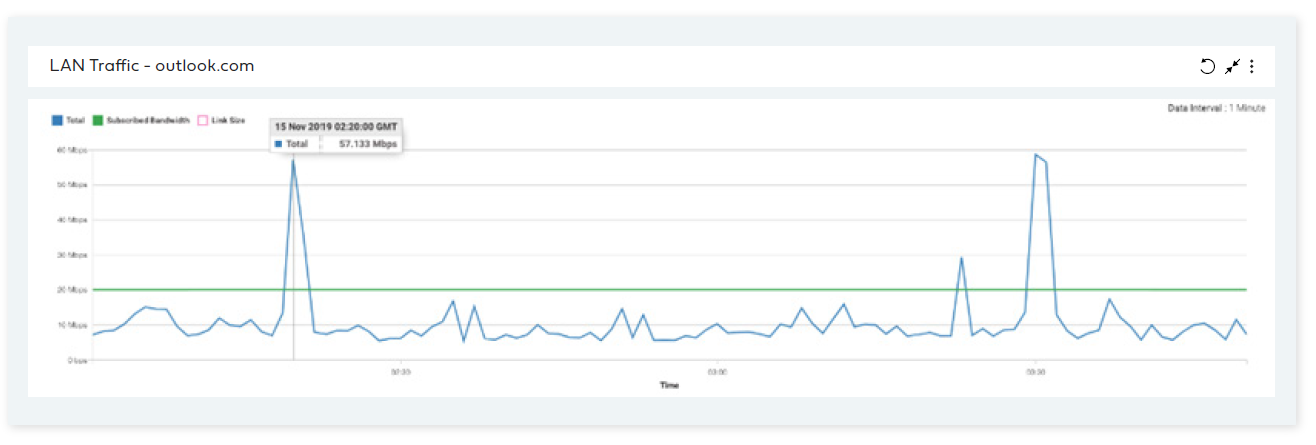
With Aryaka:

2. Up to 85% Data Reduction for Outlook Traffic.
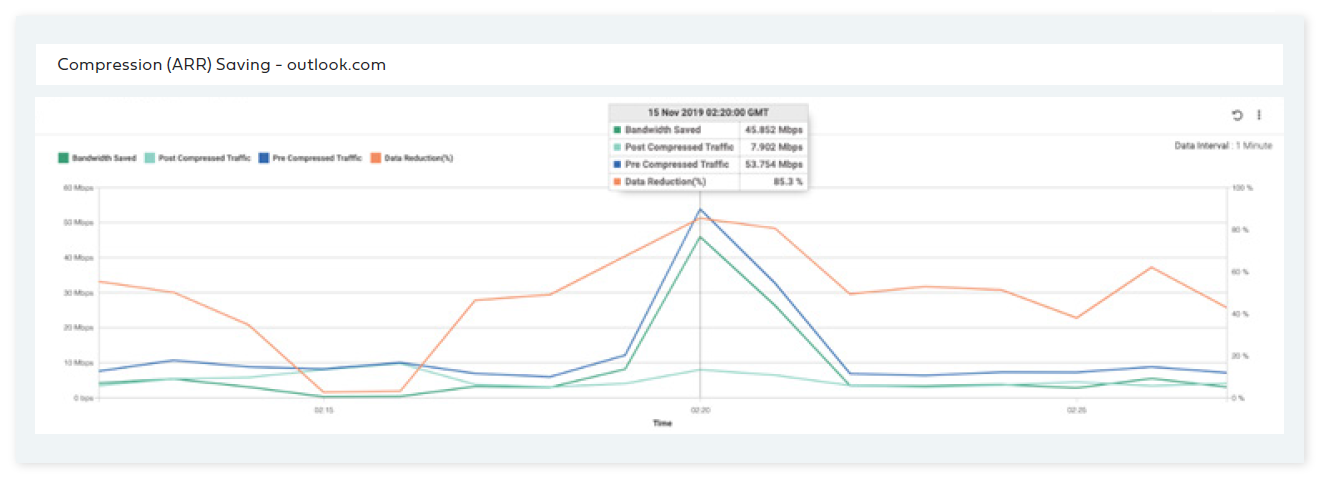
3. As Low as 0% Packet Loss.
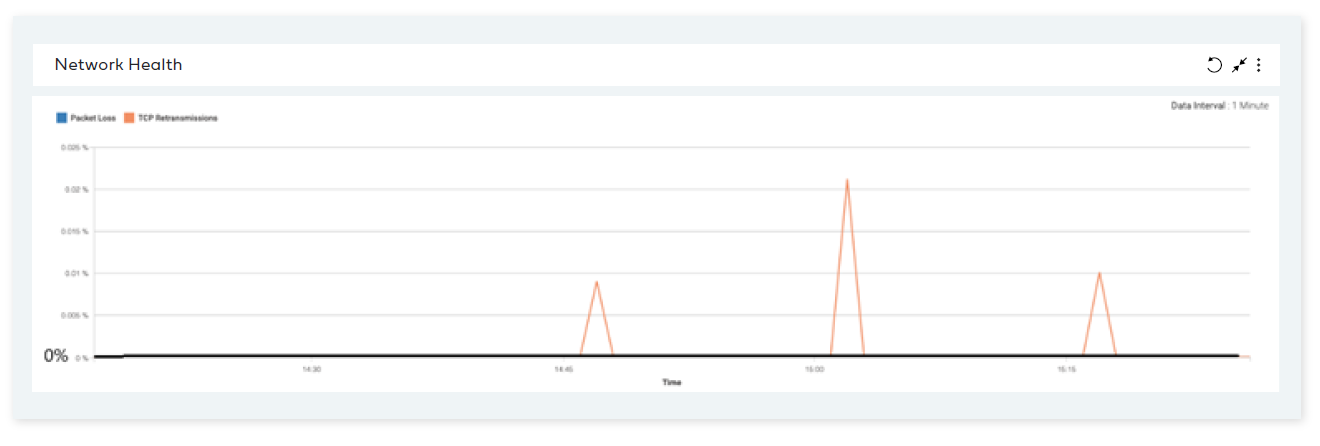
4. Up to 7x Faster TCP Connection Set-Up Time.

5. Stable Latency over the Aryaka Core.
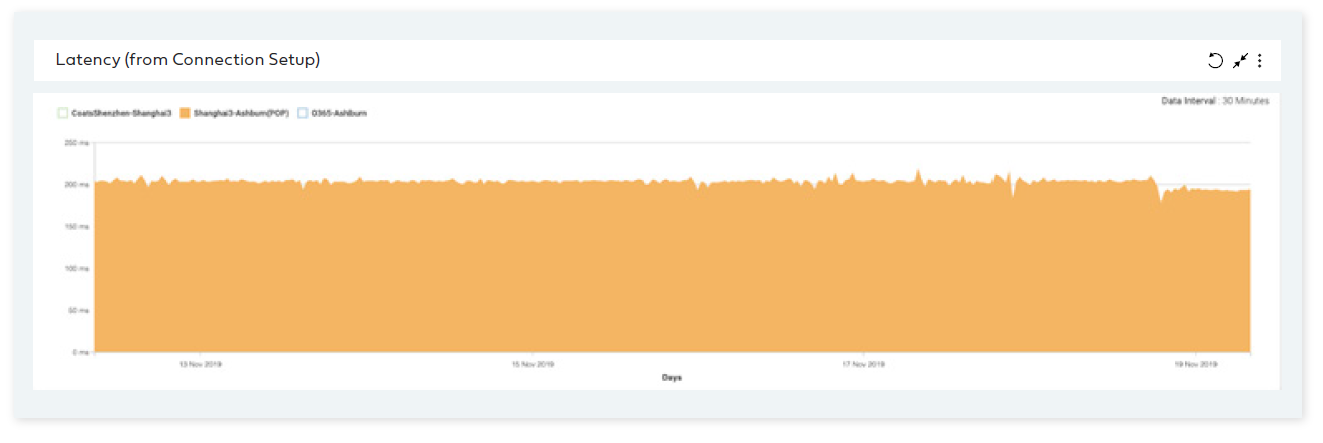
6. No Connection Drops.
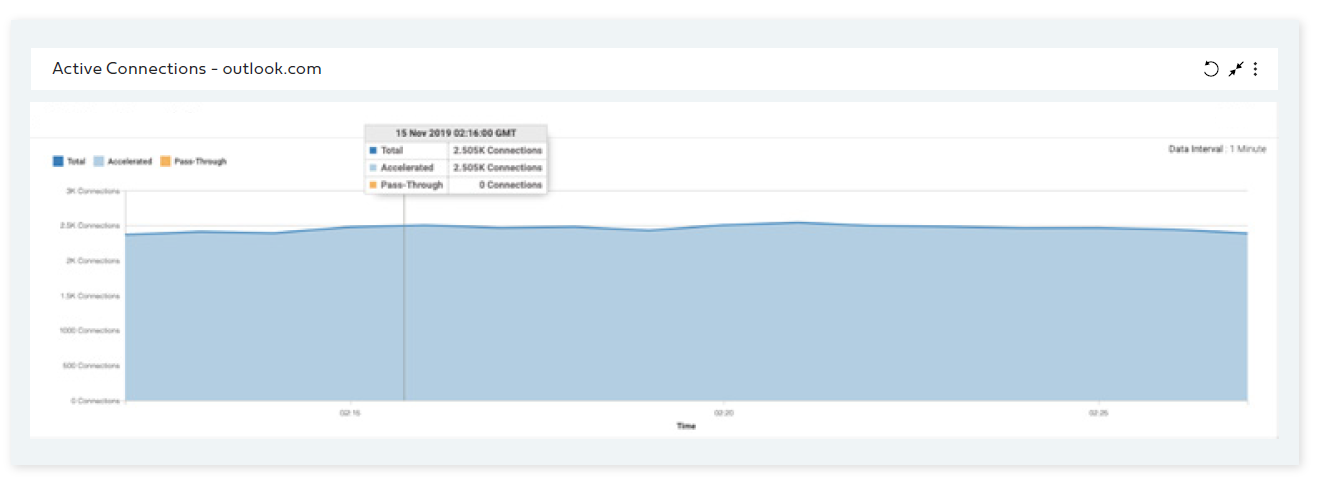
Aryaka’s SmartServices SD-WAN as a Service with Office 365 acceleration bypasses the public internet and leverages a private, software-defined Layer 2 network. through the strategic distribution of PoPs, our private network is within 1-5 milliseconds from Office 365 data centers around the world.
Our proprietary and patented optimization stack is baked into a fully-meshed private global network, freeing businesses from the hassle of maintaining and managing appliances, while providing optimized performance to cloud-hosted instances.
Aryaka maximizes Office 365 performance in tailoring the solution for each customer by selecting the Office 365 geo(s) that minimize the average distance to the users to minimize latency. Aryaka also uses WAN optimization and application proxies to deliver up to 40 times faster Office 365 performance to global users.
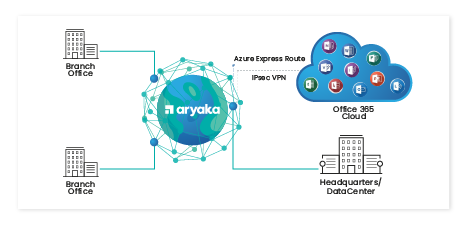
Aryaka is a Microsoft Azure ExpressRoute partner, so customers can elect either a private connection or an IPsec VPN into their Office 365 cloud from the closest Aryaka PoP. In either case, enterprises get all the benefits of application performance from Aryaka’s global private network.
Aryaka is also a launch partner for Microsoft’s Azure Networking Managed Service Provider program. This partnership enables access to the Azure Networking Services Virtual WAN (VWAN) — a service that facilitates more scalable and manageable access to an enterprise’s compute resources (i.e., VNETs), irrespective of location.
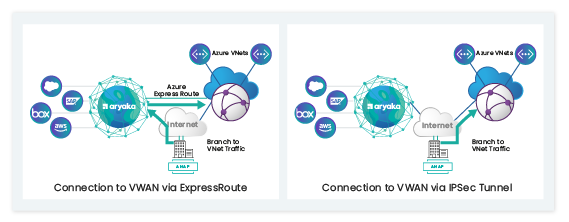
As part of this offering, Aryaka is not only providing connectivity via ExpressRoute or distributed IPSec tunnels, but is also monitoring the VWAN, providing customers with an integrated, single view into their managed WAN that includes the powerful MyAryaka portal. Enterprises are able to better scale their Azure VNET deployments, simplify branch to Azure VNET connectivity, and enjoy faster service activation and change management.
Aryaka also integrates with Microsoft Azure Active Directory to enhance the end-user application and authentication experience. As part of this, the MyAryaka cloud portal is now part of the Azure Active Directory Application Gallery.
Thanks to the “great firewall of China,” latency is a common challenge for global companies with a presence in China. Aryaka’s global PoP topology and our underlying L2 core ensures deterministic enterprise network performance for all global users.
Also, Aryaka’s partnerships with local China-based providers means we are able to offer a fully compliant, high performance SD-WAN for global companies with offices in China and Chinese companies with global offices.
In one example, consider a 100 Kilobyte file sent from San Jose to Shanghai. Over the internet, the file took around four seconds for the transfer. Over Aryaka’s network, the application response time dropped from four seconds to 0.3 seconds and variation dropped by 25%.
Without Aryaka, the latency over the US-China link is erratic. Aryaka brings down the latency to a stable 200ms. The red line shows our patented multi-segmented TCP Optimization, delivering a perceived latency between 20ms Without Aryaka, the latency over the US-China link is erratic. Aryaka brings down the latency to a stable 200ms. The red line shows our patented multi-segmented TCP Optimization, delivering a perceived latency between 20ms to 50ms to the application.
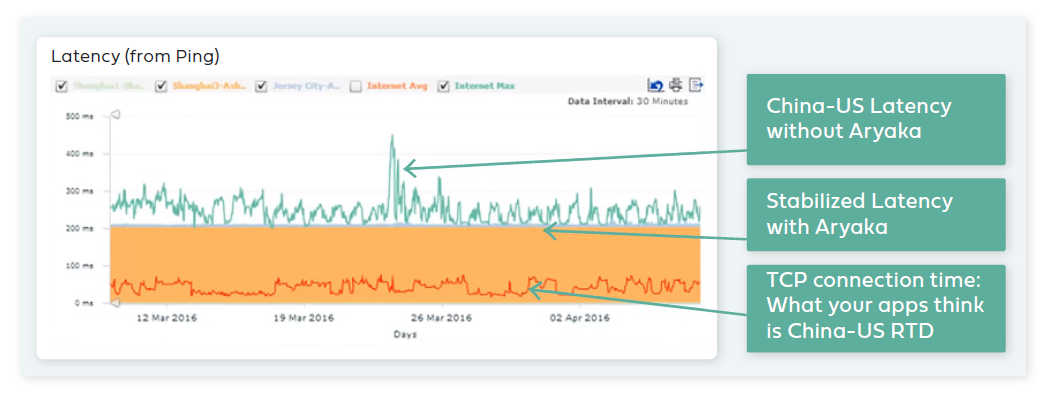
Aryaka has a multi-segmented architecture with independent proxy on each segment. The architecture addresses the congestion-based loss in two different, complementary ways.
With Aryaka’s core network connecting the PoPs, it prevents congestion during the middle mile. The globally distributed PoPs leverage LinkAssure over the Tier 1 internet connectivity which minimizes congestion across the first and last mile.
Secondly, Aryaka performs TCP termination and other TCP optimization functions per segment from edge to core and between core locations. The TCP connections between enterprise locations and Aryaka PoPs are optimized to use available bandwidth and quickly retransmit packets in the face of first and last mile packet loss.
The following snapshots show the first, middle and the last mile. The first box shows Aryaka’s Ashburn PoP communicating with Office 365 servers, with Microsoft taking around 60-100ms to respond. This is a huge amount of latency in Microsoft responding to requests.
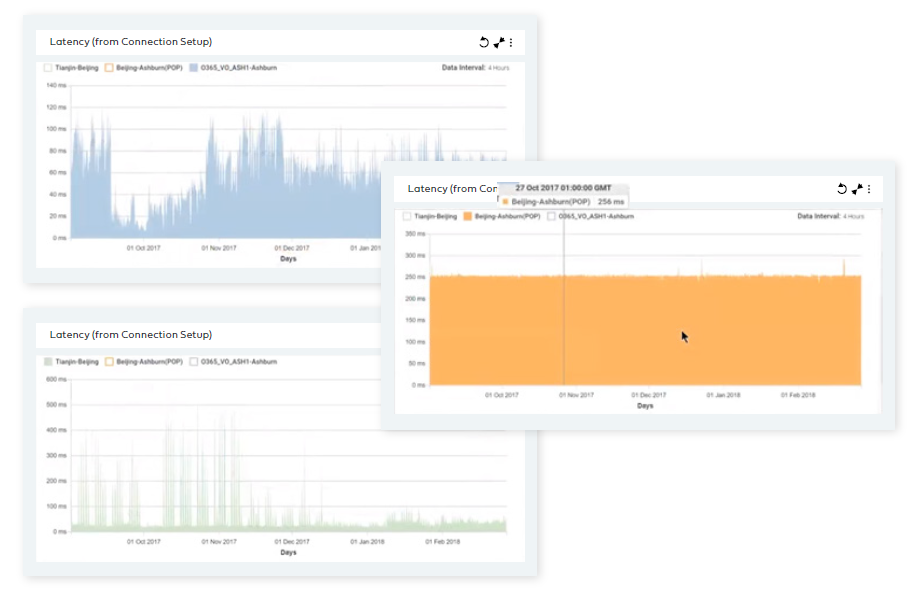
The third box shows the edge, in which the user is connecting with Aryaka through the Beijing PoP. Note the spike in connection set-up from the client side. The fixed policy-based routing on their firewall is what’s causing the latency here.
The middle box displays the Aryaka core network connecting our Beijing PoP to our Ashburn PoP with a steady core latency. The stable core latency across the middle mile negates the poor latency conditions over the edge to a great extent. Yes, the last mile is complicated, but is extremely short compared to the middle mile.
To ensure reliable MS Teams performance, embedded Quality of Service (QoS) prioritizes traffic types across five levels and multiple sub-classes using application type and pre-set service levels, limits bandwidth “hogging” by non-critical traffic and enables efficient and reliable voice, video and real-time traffic. WAN optimization is also embedded into Aryaka’s global private network to deliver up to 40x faster MS Teams performance.

With intelligent features such as load balancing, dynamic and fixed path selection, recovery of packet loss over single and dual links, packet reduction and packet order correction, the service delivers zero packet loss even over multiple lossy connections.
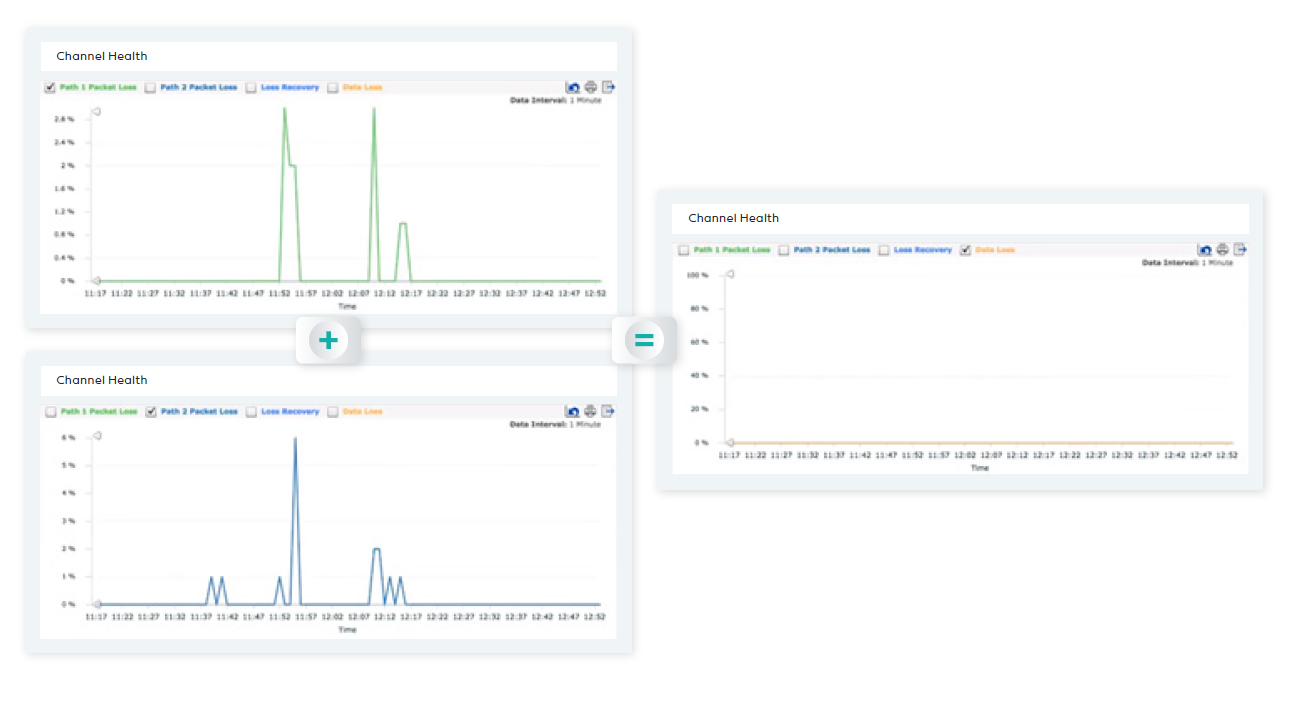
To deploy cloud applications like Office 365, enterprises have traditionally backhauled the data through the corporate datacenter, to the internet, and back again. Not only is this an incredibly inefficient method of application delivery, but the quality of the connection – the reliability of your latencies and packet delivery – suffers. To combat this, you must purchase WAN Optimization Controllers (WOCs) and SD-WAN for every location as well as hire IT staff to monitor the network performance.
With the Aryaka approach, users need not “trombone” their Office 365 traffic through an enterprise datacenter. Bandwidth-scaling benefits, typically as high as 70% to 90%, are still obtained with traffic going over each customer location’s Internet link to the closest Aryaka PoP and directly to the cloud service. Note that bandwidth scaling works both for HTTP and encrypted HTTPS access – again, without requiring backhauling to a central enterprise location first.
While a dedicated 10Mb MPLS network may exceed $2,100 a month, its cheaper counterpart in the internet was never designed to match the requirements of Web App delivery. Selecting the network that provides the right balance is hard work and usually requires some sort of compromise. So how can you make sure that your SaaS application, such as Office 365 and Salesforce, perform as reliably from home as they do from work?
Aryaka delivers performance guarantees for Office 365, removing a significant burden from already overworked IT departments. Aryaka’s SmartServices SD-WAN as a Service offers comprehensive real-time data and alerts on the mix of applications, geographic locations, and performance and availability criteria, integrated into a single management console accessible from anywhere, anytime.